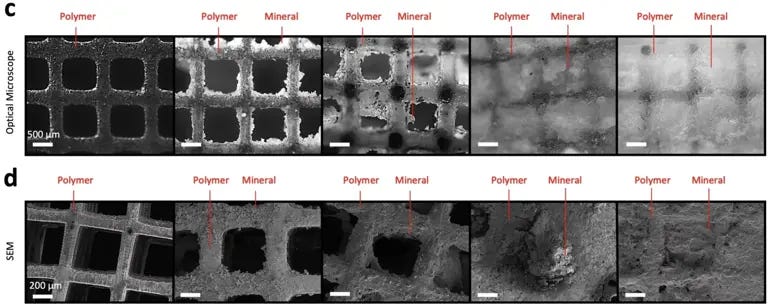Innovation Bites: Built Environment Matters
Sometimes climate innovation is on the city-wide scale. Sometimes, it's microscopic.
It’s fun to be reminded that sustainability innovation comes in all shapes and sizes — from regional all the way down to the microscopic. Today we’re going to look at three exciting new innovations in the building and real estate worlds. Take a look:
a/ Using Nature to Cool a City
What’s it like to live in a master-planned community that’s focused on environmental sustainability?
Try 5 degrees cooler than surrounding cities, with breezes that make it possible to walk or bike and reduce the need for air conditioning. The city, northeast of Mumbai India, was designed to be a pilot test-case for other cities, which could copy its successes.
From the developer:
“Suppose you’re doing a hundred things here, definitely 50 of them can be applied in any existing city depending on the context.”
b/ Making Concrete Improvements
Concrete is a problem—traditional concrete, as it cures, releases carbon dioxide. And society uses so much concrete that, if it were a nation, it’d be the fourth largest emitter of carbon dioxide on the planet (approximately 8% of global CO2 emissions come from concrete).
But there’s a better way!
Enter concrete that doesn’t release CO2, but rather absorbs CO2 during the curing process.
Many companies are commercializing approaches to using the new approach to making concrete—everything from additives that go into existing concrete mixes to new types of cement to pre-cast blocks.
Mehdi Khanzadeh, an assistant professor of civil and environmental engineering at Temple University, has a new approach to creating carbon-absorbing concrete that also makes the resulting concrete stronger. Initial tests show a strength improvement of 80-100%.
c/ Seafloor Technology On Your Rooftop
Speaking of capturing carbon, how about creating exceptionally strong, fire-resistant building materials the same way coral reefs form?
Researchers at the University of Southern California used 3D printers to create coral-inspired scaffolds, which they then coated with a conductive material and connected to an electronic circuit. When submerged in a calcium chloride solution and exposed to carbon dioxide, the scaffolding “grew” a carbon-dense coating and filled in the scaffold’s gaps.

What’s really exciting is that the result was exceptionally strong and fire resistant—withstanding direct flame with no damage for more than 30 minutes.
With climate change causing more massive forest fires globally, the demand for fire-resistant building materials is on the rise. Technology like this could be a way of creating better building materials while also addressing the surplus CO2 in the atmosphere—the root cause of the climate crisis.
Whenever I see interesting climate and sustainability innovations and trends, I’ll include them in future editions of Innovation Bites. Subscribe to the Climate Innovator now to ensure you never miss out!


